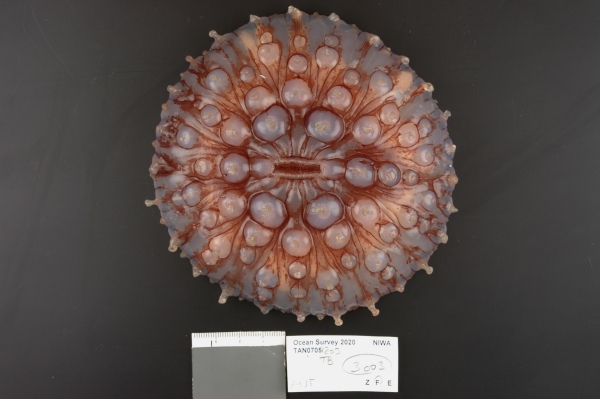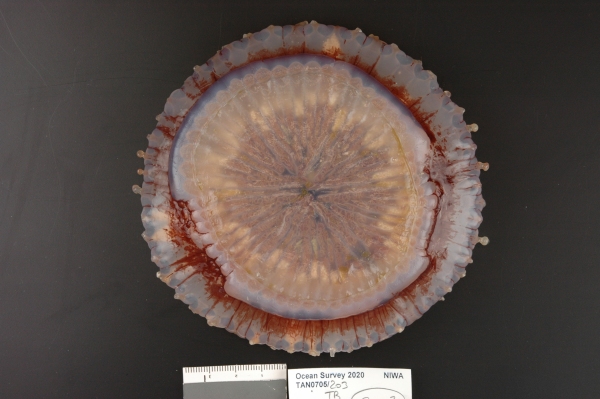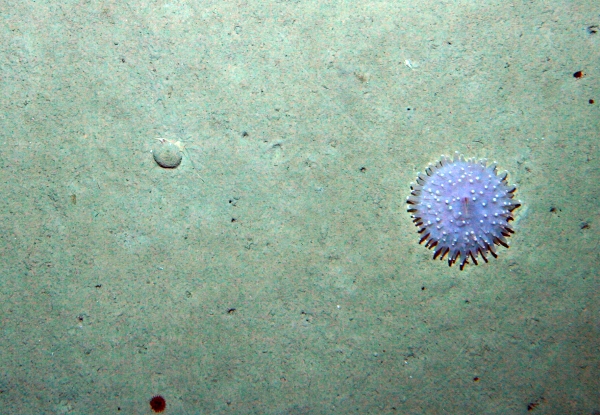Corallimorpharia are a group of cnidarians morphologically intermediate between sea anemones and stony corals.
Like sea anemones (Actiniaria), they lack a calcareous skeleton but their internal anatomy and nematocysts are similar to stony corals (Scleractinia). In fact, phylogenetic studies have shown that Scleractinia and Corallimorpharia are closely related.
Where are they found?
We find Corallimorpharia around New Zealand as well as in the Ross Sea, Antarctica. Most people would know members of the group from the shallow water, for example the jewel anemones, Corynactis spp. The genus Corallimorphus contains six species worldwide, with a recorded depth range of 30 – 4429 m. Three of these species occur around New Zealand. In 20087 on an Oceans Survey 20/20 survey of the Chatham Rise, a new species of corallimorpharian was discovered at 1404 m deep. Researchers onboard thought it looked a bit like a psychedelic disco ball and weren’t sure what group to place it in. This specimen was later described as the holotype of Corallimorphus niwa in 2011 by Dr. Daphne Fautin from the University of Kansas following a visit to NIWA to identify sea anemones.
You can download Dr. Fautin’s paper here.
Corallimorpharian bodies
Just like jellyfish, the bodies of corallimorpharians are made up of mesoglea, a jelly-like substance which acts as a structural support as it lacks a skeleton. The oral disc is where Corallimorphus niwa feeds from – each large bump on its surface contains tentacles and these bumps diminish in size from the mouth (the thick red line in the centre). The pedal disc, or foot, on the underside of the animal is so thin that you can see into its partitioned gastrovascular cavity.
Habitat
Corallimorphus niwa lives unattached on muddy soft sediment, which is a habitat favourable due to its low, discoidial body form. However, a related species found in the Ross Sea in Antarctica, Corallimorphus profundus Moseley, 1877, attaches itself to rocks and boulders and is shaped like a jester’s cap. Corallimorphus profundus has large, white globular ends (called “acrospheres”) at the tip of each tentacle containing numerous nematocysts, which are the stinging cells that function to protect the animal or collect food.



